#palladium role-playing
Explore tagged Tumblr posts
Text
Palladium Books Presents: The Rifter #1 - Rifts: City Creation
Ready to build your own city in Rifts? 🏙️ Discover innovative city-building rules in "The Rifter #1" by Palladium Books. Transform your gameplay with our detailed video overview. Click here! #RiftsRPG #CityBuilder #TheRifter
The Rifter #1 As a wise master unveils ancient city-building secrets, so too does our latest video guide you through the new urban landscape rules introduced in “The Rifter #1” for Rifts. Understand the foundations that make a strong city and the strategies that protect its people. Let your journey to becoming a master city planner begin here, where knowledge becomes power and creation shapes…
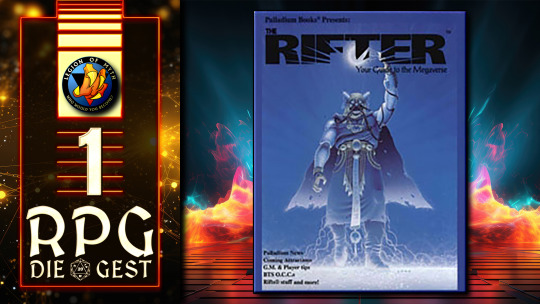
View On WordPress
#game master tools#gaming supplements#legion of myth#Palladium Books#palladium books review#Palladium Fantasy#palladium game books#palladium role-playing#Rifts RPG#role-playing game enhancements#role-playing game tips#rpg adventure modules#rpg campaign ideas#rpg character creation#rpg expansion packs#rpg game mastering#rpg player guides#rpg strategies#rpg world building#tabletop game guides#tabletop RPG#the rifter 1#the rifter guide#the rifter review#the rifter series
1 note
·
View note
Text

I think we can fit one more gun on there (Kevin Long illustration from ad for Robotech the Role-Playing Game and supplements by Palladium Books, in Dragon magazine 135, July 1988)
#Robotech#Kevin Long#mech#mecha#sci fi#Robotech the Role-Playing Game#Robotech RPG#Palladium Books#Dragon magazine#RPG#1980s
297 notes
·
View notes
Text

Clyde Caldwell painting for Palladium
“Island at the Edge of the World”
That warrior has some Sam Neill vibes!
#clyde caldwell#fantasy#art#illustration#palladium games#rpg art#sam neill#ttrpg#role playing games#1990s fantasy#island at the end of the world#magic sword
6 notes
·
View notes
Text
1. First #ttrpg you ever played? D&D Advanced
2. First you ever ran? Palladium TMNT
3. Played the most? Palladium Fantasy
4. Run the most? Tribe 8
5. Favorite? Tribe 8
6. Most recently played? Eclipse Phase
7. Most recently run? Fate (custom fantasy setting)
#dnd#dungeons and dragons#fate#fate rpg#palladium#tmnt#ttrpg#ttrpg community#table top role playing game
0 notes
Text
On Diomedes of Argos.

Typically, when people think about their favorite heroes of the Trojan siege, they think of the likes of Achilles, or Odysseus, or even Agamemnon (or if you’re based, Hector.) And while these are all valid to whatever extent— because let’s be real, no one is choosing favorites based on who has the purest moral standpoint— they’re not exactly remembered for the noblest of reasons.
Achilles spends half of the Iliad inside his tent as a sulky burrito, and the other half slaughtering Trojans and crying over the consequences of his own actions. Odysseus is a chronic liar, and Agamemnon is Agamemnon. But at the end of the day, they’re still remembered (for better or for worse, really.)
Though, on the topic of Homeric heroes, I feel there is one who is often overlooked despite achieving great feats over the course of the epic; Diomedes of Argos. (Note: arguably the most metal of the Achaean heroes at Troy.) So, let’s rant talk about him!
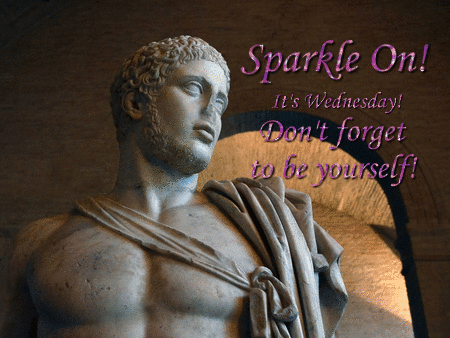
Diomedes was one of the key players in Homer’s Iliad— a recount of the last year of the Trojan siege. Being summoned to fight under oath, Diomedes headed his fleet of 80 ships to Ilium. As well as having a whole chapter dedicated to how kickass he was [read more about that whole thing here], the king of Argos was also a master strategist, and extremely noble— not just in his war efforts.
For example, there are multiple points in the Iliad where he checks the leader of the Trojan expedition, Agamemnon, calling him out on his cowardice or for otherwise being an inadequate leader, [Book 9; ‘Agamemnon, I will begin by taking issue with you over your proposal… do you really believe the Greeks are the cowards and weaklings you say they are? If you for one, have set your heart on getting away, then go.’] [‘Zeus has granted you many things… He gave you the sceptre of power and the honour that comes with it, but he did not give you courage— and courage is the secret of authority.]
And one instance where he truces with the Trojan hero, Glaucus— both of them exchanging armors (on an active battlefield, btw) to honor the fact that their grandfathers had been allies, [Book 6; ‘So let us avoid each other’s spears... And let us exchange our armor so that everyone will know our grandfather’s friendship has made friends of us.’]
He is also one of the only soldiers in the war who avoids committing hubris in the entire epic, which is probably the most telling of all his virtuous traits.
Diomedes also has a proverb named after him! ‘Diomedean Necessity/Diomedean Compulsion', which basically means when someone does something for the greater good (despite the reluctance of the person in question.)
This is taken from the myth of Odysseus and Diomedes taking the wooden statue of Athena— dubbed the Palladium— from Ilium. During this heist, Odysseus tries to stab Diomedes in the back to steal the acclaim of taking the Palladium for himself.
Rather than punishing Odysseus on account of betraying his ally for personal gain, Diomedes ties him up and drags him back to camp instead, because he knew the Greeks couldn’t win the war without Odysseus’ wisdom.
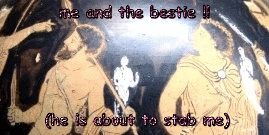
Anyway, why the rant? Sure, I could sit here and convince you that he’s the coolest Greek hero, but what would I be trying to accomplish in doing so? Well, it’s simply because while every other Homeric hero is recognized and represented in modern media, Diomedes isn’t.
He wasn’t even mentioned once in Troy (2004), the film adaptation of the Iliad! Despite him being the focus of multiple chapters in the book, as well as playing a big role in the Achaean army’s over-all victory.
I’m sick of everyone (and by that, I mean most modern media) depicting him as though he was just some dude™ in the Iliad when he was actually (from a mildly biased standpoint) one of the best of the Achaeans at Troy.

TLDR; Diomedes of Argos = Based. He solos ur favs (probably. He almost killed Ajax the greater at Patroclus’ funeral games 💀)Put him in more movies/shows/games so me and the other two Diomedes fans can be happy.



#tagamemnon#greek mythology#greek epic#homeric epics#the iliad#diomedes of argos#i didnt get to talk about him on the battlefield for the sake of the word count#BUT HE WAS A BEAST#i think he got the most kills in the book ??#insane.#dont even get me started on all the roman cities he founded#UGH what a guy#are these enough glitter gifs to boost my grade owen
92 notes
·
View notes
Text
Athena’s Exes
So, I recently noticed people agreeing that Goddess Athena is Asexual, but from mythological sources like the stories about Pallas, there are hints that she was not aromantic. During a long research spree and reading other people's opinions, I've noticed she'll be considered a Biromantic Sapiosexual Asexual. AKA, not into the, how do I say this in PG language, bedroom stuff due to being a Parthenos, but shows romantic interest to anyone with brains. These are just notes I made while researching this topic. I encourage you all to do your own research. I'm willing to make a part two post of links if anyone needs them. Warning! Greek Mythology is known for incest included in their stories. You've been warned! Please let me know if there is anyone else I missed so I can update this post. Hephestus will not be included since Athena was not in love with him in any way. Now, let's move on to my notes of a few examples.
Pallas, The Lost BFF
When Athena first burst out of her father's head, Zeus, she was taken in by Triton, her cousin and son of Poseidon. Triton also had a Nymph daughter named Pallas. The sources are borderline on how Athena and Pallas viewed each other. Some say they were sisterly best friends, and some say they were more than friends. What the sources have in common is that the two girls practice sparring and compete together.
Fate: During a sparring contest or a friendly sparring practice match Zeus attended or happened to be watching, Athena and Pallas’s fight got heated. Scared for Athena's life, he used his aegis to distract Pallas. Unfortunately, this caused Athena to accidentally impale and kill her best friend. To make it up to Athena, Zeus gave her his aegis, which we see Athena wear to this day. Athena later created the palladium, a statue that looked like Pallas, and Athena took the name Pallas as her epithet.
Prometheus, Thief God of Fire and Hearts
There are a few theories about these two. Especially since Athena helped Prometheus steal the fire. There was one story in which Prometheus had a crush on Athena, which is why he was punished. And believe me, Prometheus and Athena were not on my Bingo Card this year. However, it makes sense since the two have a lot in common, they have worked together many times, and both played a role in creating a new version of humans. Another variation of Athena's birth myth is Prometheus freeing Athena instead of Hephaestus, or he does help out in the process of freeing Athena from Zeus's head. Yes, you may say, “But didn’t accident resources say Prometheus was married and had a son?” Remember, these stories have changed and merged over time with different variants. Some sadly lost to time. Ultimately, we are left with our imaginations when approaching these stories as long as the original culture is respected. But it does make things complicated. Prometheus and his wife, Pronoea or Hesione, never got married or divorced. Be free to come up with theories, everyone.
Fate: After getting caught afterward, Prometheus was punished by getting chained to a rock, and his liver was eaten by an eagle. Then, Prometheus's liver regrows overnight, but his torcher continues each day until he is finally freed. But unfortunately for the rebel titan, it ended his relationship with Athena. To make things worse, Athena was part of making Pandora, so Athena was punished at the end of the day, too.
Myrmex, Maiden Heartbreaker
In an insect origin story, Myrmex was a young Attican maiden who became the goddess' favorite. She was known for her cleverness and her chastity, a significant reason why Athena had a love for the maiden. Athena showed humans how to sow their fields when she created the plow. However, Myrmex was greedy on the inside. Myrmex went behind Athena’s back, stole some sheaves, and claimed she invented the plow to the public in conman fashion.
Fate: Heartbroken, Athena turned Myrmex into an ant, cursing her for stealing other's grain forever. So, talk about the worst breakup of the year there. The lesson is don't break the heart of someone who cares for you, romantically or platonically, because the betrayed will get petty revenge.
Phereclus (or Phereclos), the Shipbuilder of Tragic Dreams
Although one line mentions this, the Illiad mentions a Trojan shipbuilder, Phereclus (or Phereclos), who once made well-balanced ships. According to the different translations of Book V, Athena had “a special love for him,” “for Pallas Athene loved him above all men,” or “Pallas Minerva had dearly loved him.” Either he was her protégé, there was something more, or both.
Fate: According to Book V of the Illiad, Phereclus was killed by Meriones since it was one of Phereclus’s ships that Paris used to kidnap Helen. And if you read it, it’s pretty graphic. People can form their theories on the subject despite just that one line.
Hercle (aka Etruscan version of Heracles/Hercules), A Lover in Question
Disclaimer! This is from the Etruscan sources. I do not ship Hercle/Heracles/Hercules with Menrva/Athena/Minerva. Please do not attack me, people! In the Etruscan religion, Athena was not viewed as a Parthenos. Some sources hint at the two being romantically involved despite being siblings or half-siblings. Even having a blood or adopted kid together named Epiur??? But the two Gods were probably Epiur's protectors instead. Hercle and Menrva were Gods of protecting children back then to the Etruscans. Epiur is still a big mystery, so people, please do your research!
Fate: If we go with Hercle's Greek Version, Heracles had a crazy death, but he became a God, and then he ended up marrying his other half-sister, Hebe, the daughter of the Goddess who was out for revenge on Heracles, Hera. Yeah, this family tree is messed up for the wrong reasons, and I don't want to elaborate further.
That's it for now! Criticism is welcome if I get something wrong and need to fix it. I'm willing to post the links if anyone is curious about these details. Studying Athena's past friends or possible past lovers was an interesting rabbit hole to explore. If I inspired you in any way, please use these ideas as long as you respect original sources and know Athena is a Parthenos. Thanks for coming to my TedTalk of Athena's Exes for now!
Edit: To Epic the Musical fans, be free to use this for any of your theories because these losses may have affected Athena.
#greek gods#athena#goddess athena#athena goddess of wisdom#pallas athena#minerva#menrva#pallas#zeus#god zeus#god prometheus#prometheus#myrmex#phereclus#hercle#heracles#hercules#posideon#triton#hephaestus#pronoea#hesione#meriones#paris#helen#epiur#hebe#hera#hera goddess#epic the musical fans go wild with your theories
55 notes
·
View notes
Text
Weapons of the Monkie Crew



Khakkhara
The basic design of a khakkhara is of a central staff, normally in wood, topped by a finial in metal, with a looped design, from which smaller metal rings hang on each side (similar to the stringing of traditional Chinese cash). Various numbers of loops and rings are employed, with each number being assigned symbolic significance on the basis of a variety of Buddhist numerical formulas. Historical examples from the Famen Temple include staffs with one, two, or four loops and four, six, or twelve rings on each loop.
Several versions of the staff's origin are given in the Sarvastivadavinaya, but in all of them the staff is recommended to monks by the Buddha in order to ward off animals- either for protection from dangerous predatory animals like tigers and lions, or for scaring off small creatures like spiders and snakes that might be trod upon by wandering monks. The ringing of the staff can also alert donors within earshot of the monk's presence, as monks traditionally remain silent while collecting alms.
The number of loops and rings featured on the staff was also assigned symbolic significance, according to a variety of Buddhist numerical formulas- four loops symbolizing the Four Noble Truths, six rings representing the Six Perfections, or twelve rings representing the twelvefold chain of cause and effect
Tripitakas / Tangs staff has four rings and with the added LMK universe flare magic.


Yue Ya Chan (Crescent Moon Spade)
Also known as the monk spade, the yue ya chan (月牙铲) is a typical weapon associated with the Shaolin warriors. It features a crescent-moon-shaped blade mounted on a wooden shaft and a flat wedge-shaped blade on one end.
In ancient China, the Shaolin monks carried spades when traveling to bury corpses they might find on their journey as part of their religious obligation. Eventually, it turned into a self-defense weapon with the addition of the crescent blade, which allowed hooking and sweeping techniques.
youtube


Chinese Bronze Swords
Of course, Meis is made of Jade but the Bronze sword I think bests fits her TYPE of sword. Chinese Bronze swords first appeared during the notable Xia and Shang Dynasties in China. They were an advancement from the prior Chinese Dagger, boasting a considerably bigger blade. These weapons stood out because of their wide and robust blades. Initially, people used these swords in ceremonies and rituals. As time passed, these swords played a pivotal role on the battlefield, which significantly altered the course of China's history. Along wth this I put a video of some people showing of Chinese Swords including the one I mentioned.
youtube
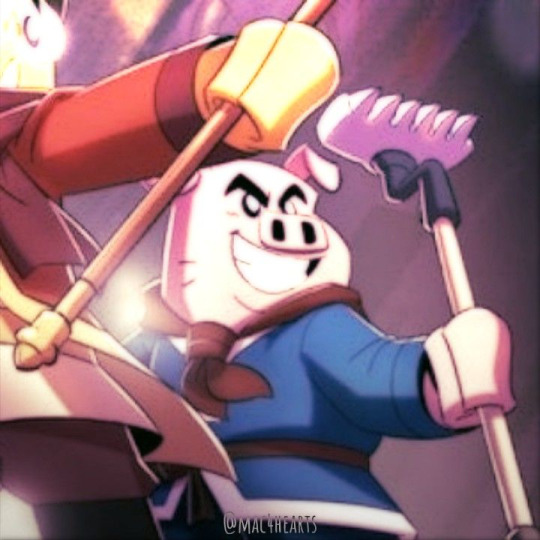
Nine-Toothed rake/ Baoqin Gold Palladium
This weapon is hard to find much of in the real-world use besides as a gardening tool but in the JTTW the Nine-toothed rake is a polearm with nine teeth. Pigsy’s weapon more closely resembles agricultural tools that were traditionally used by farmers since the Yuan Dynasty. It is said to have been handcrafted by Laozi from divine ice steel and etched with arcane symbols. I may not have been able to find much in words but I did find two videos of some guys showing off how it can be used in a fight.
youtube


Staff
Both MK and Macaque currently use a staff. The Chinese staff is considered the grandfather of all weapons. The long staff is the most common, usually about 7ft long, and constructed from hardwoods like oak or white wax. It originated from the long spears used by classical warriors. The Shaolin monks removed the spearheads and trained with only the shafts suited for their peaceful monastic environment.
youtube
youtube
NOW heres the BIG Question with just about everyone in the Monkie Kid Crew welding a weapon what about...... WUKONG!!

Look his hand-to-hand is awesome and has crazy powers but seriously after his staff has been passed down and this new chaos coming it might be time for Wukong to wield another weapon.
While looking up the other's weapons I found others on theme with other old Chinese weapons.
San Jie Gun (Three-Sectional Staff)

The san jie gun (三節棍) consisted of three short staves connected by chains. It functioned as a self-defense weapon, suited for either short-range or long-range combat. Unlike a long staff, it can be easily concealed and carried. It also allows various methods of attack and defense. Versatile and hard to learn, it is among the weapons of choice for many advanced martial artists.
To stay in the staff family like the other monkeys but still change things up.
or
Chui (Hammer)

A type of mace, the chui (锤) was a round hammer, usually used in pairs. It had a heavy head on the end of the handle for delivering powerful strikes. This ancient Chinese weapon was most popular in the Shang and Zhou dynasties.
The chui was known as the copper hammer because it was often made from copper, though other materials were later used. Since they are typically heavy and require great strength to wield, these weapons are not popular among kung fu practitioners.
I picked this for its blunt and powerful hit. Similar to the Monkey King's own fists.
or
Tie Jian (Iron Rod)

The term jian (鐧), written in a different character from the sword (劍), is also used to describe a heavy bar mace with a smooth rod. They were typically made from iron and called tie jian (鐵鐧) or “iron rod,” but there were also tong jian (bronze rod). The name iron rod is a reference to its plain metal rod.
In the West, the tie jian is regarded as a type of Chinese sword breaker—a heavy weapon capable of breaking swords and other weapons. During the Ming dynasty, the military used large two-handed versions of tie jian. By the Qing dynasty, single-handed versions were more common.
This weapon has the blunt power similar to a staff and having the reputation of a sword destroyer it seemed to fit the powerful hit from the Monkey King.
or
Hu Die Dao (Butterfly Saber)

Widely referred to as butterfly swords, the hu die dao (蝴蝶刀) is a type of double saber. These weapons developed due to merging typical Chinese fighting knife blades with Western-inspired hilts. They featured distinctive D-shaped guards, though their blades came in various forms.
The narrow types were efficient for heavy cuts and were likely to be used by the Chinese military units and the local militia. On the other hand, the broader types were efficient for disabling opponents without killing them and remain popular today among martial artists.
I picked these ones because they would be the only dule weapon. Giving some variety.
Each one of these I found could fit Wukong in one way or another. But if you have any other ideas for the Monkey King leave them in the comments
:) Thank you for reading.
54 notes
·
View notes
Text
Tomorrow the Sailor Moon The Super Live North American tour begins!


Here again all informations:
The Super Live has been performed in 21 cities in 14 different states in the USA.
All dates including venue:
March 12 Pittburgh, Pennsylvania - Byham Theater ✅️
March 15 Austin, Texas - Bass Concert Theater✅️
March 18 San Antonio, Texas - Majectic Theater✅️
March 19 Sugarland, Texas - Smart Financial Theater✅️
March 22 Los Angeles, California - Ahmanson Theatre✅️
March 25 - 26 Seattle, Washington - Paramount Theater ✅️
March 27 Spokane, Washington - First Interstate Center ✅️
March 29 Portland, Oregon - Keller Auditorium✅️
April 1 Dallas, Texas - Winspear Opera House✅️
April 3 Midland, Texas - Wagner Noel Performing Arts Center✅️
April 6 Minneapolis, Minnesota - Orpheum Theater✅️
April 8 St. Louis, Missouri - The Fabulous Fox✅️
April 11 Dayton, Ohio - Schuster Center✅️
April 12 Columbus, Ohio - The Palace Theater✅️
April 13 Louisville, Kentucky - The Kentucky Center✅️
April 15 Chicago, Illnois - Chicago Theater
April 16 Milwaukee, Wiscousin - Riverside Theater
April 18 Neward, New Jersey - New Jersey Performing Arts Center (NJPAC)
April 19 Hartford, Connecticut - The Bushnell Performing Arts Center
April 22 Philadelphia, Pennsylvania - Miller Theater
April 24 - 26 New York City - New York Palladium Times Square
Cast:
Riko Tanaka as Sailor Moon/ Usagi Tsukino
Kanon Maekawa as Sailor Mercury/ Ami Mizuno
Rei Kobayashi as Sailor Mars/ Rei Hino
Kisara Matsumura as Sailor Jupiter/ Makoto Kino
Marin Makino as Sailor Venus/Sailor V/ Minako Aino
Riona Tatemichi as Tuxedo Mask/Tuxedo Kamen/ Mamoru Chiba
Sayaka Okamura as Queen Beryl
Luna (only as voice): Misato Matsumoto
Ensemble:
Youma:
Ayano Nagasawa
Ayumi Sagisaka
Minami Watanabe
Kana Yanagihara
Izumi Niihashi
Suzuka Osawa Unfortunately, she will not be there due to a leg injury.
They were already the Inner Senshi in the musicals from 2021 to 2022. Tuxedo Mask has played the role since 2018 and has been with Sera Myu since 2014. Sayaka Okamura once again takes on the role of antagonist. Previously, she was Snow Princess Kaguya. Misato Matsumoto is one of the Luna puppeteer from the Nogizaka Musical. Her voice was also heard on Shining Moon Tokyo.
#sailor moon#sera myu#bishoujo senshi sailor moon#pretty guardian sailor moon#sailor moon the super live#inner senshi#anime and manga#musicals#90s anime#queen beryl#tuxedo mask#sailor mercury#sailor mars#sailor jupiter#sailor venus#sailor moon musical#dark kingdom#sailor moon luna#usagi tsukino#ami mizuno#rei hino#makoto kino#minako aino#mamoru chiba
18 notes
·
View notes
Text
Something about being stuffed into a role you're not supposed to be in.
Something about Ryou Bakura being Yuugi's friend and not his enemy, even if the Ring demands that role.
Something about Jounouchi being obsessed with proving himself to be an adult and a man when he's just a kid who wants to play card games with his friends. Even if his mom saw too much of his dad in him.
Something about Priest Seto being in the afterlife, so Kaiba was never his reincarnation to begin with.
Something about Kaiba taking on that legacy of blood and destruction when it was never his, he just wanted to be safe and protected and secure. Something about Malik Ishtar being associated with the sun when his history demanded he be underground. Something about Palladium Oracle's magic being piercing against Darkness when he took on the role of Dark Magician for three millennia.
Something about Yuugi Mutou being deemed a vessel when he's the King of Games. Something about Yuugi's ultimate dragon being the perfect counterpart to Blue Eyes. A dragon of destruction made of darkness to the ultimate engine of destruction of light. Something about Yuugi's story being about believing he wished for friends when Jounouchi told him that the only time he ever loved himself was when he was with Yuugi. Something about Yuugi being forced to a role he never wanted just because he was kind enough to believe in the good in people when faced with every reason not to.
Something about Pharaoh Atem being put in a face and body and life that was never his. Something about taking on being a literal shadow. Something about believing himself to be darkness. Something about everyone else believing he's darkness. When he was described by Shada and Dark Bakura both as light. When to this day people still call him darkness.
Something about Duelist beginning and ending with a TTRPG.
Something about the two souls of light and darkness being switched from the beginning.
Yuugi's ultimate monster is the dragon of destruction.
Atem's is the creator of light.
#atem#yuugi mutou#yugi mutou#yugi muto#no but i seriously think this is the theme by the way#yugioh#Yu-Gi-Oh#ygo#seto kaiba#ryou Bakura#malik Ishtar#Jounouchi katsuya#dark bakura#priest seto#yami yuugi#yami yugi#yami#Yami bakura#dark yuugi#dark yugi#yami bakura#priest shada
172 notes
·
View notes
Text
Palladium Books Presents: The Rifter #1 - Nightbane: New Morphus Tables
Transform your Nightbane character with the new morphus tables in "The Rifter #1" by Palladium Books. 🌑 Explore how these changes can revolutionize your gameplay in our latest video. Watch here! #NightbaneRPG #TheRifter #RPGGaming
The Rifter #1 Like an ancient scroll revealing transformative powers, our video unveils the new morphus tables for Nightbane in “The Rifter #1.” This arcane knowledge grants you the ability to reshape your Nightbane character’s destiny with unprecedented depth. Let not this wisdom pass you by, for those who wield it will command the shadows and light. Click the image to claim your guide to the…
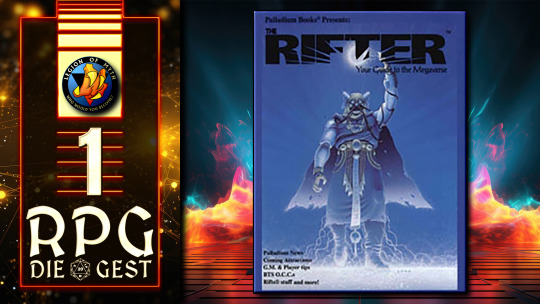
View On WordPress
#game master tools#gaming supplements#legion of myth#Palladium Books#palladium books review#Palladium Fantasy#palladium game books#palladium role-playing#Rifts RPG#role-playing game enhancements#role-playing game tips#rpg adventure modules#rpg campaign ideas#rpg character creation#rpg expansion packs#rpg game mastering#rpg player guides#rpg strategies#rpg world building#tabletop game guides#tabletop RPG#the rifter 1#the rifter guide#the rifter review#the rifter series
0 notes
Text

So now I'm back in France, back to work, after a week-end (well, four days) spent in Como and Milan heading to The Reunion Concert premiering in Europe, and I need to talk about it more.
I've been a music fan for ever, I love to sing and I take singing lessons and musical theatre is a huge part of my life now (even though you could say it's quite "recent", in a way, at least the deep passion and connection that makes me want to listen to MT all day long every day and see 152 shows). I live in France, and even if we have a small community that enjoys musical theatre, it's not that easy to see your favorite performers. Unless of course you want to focus all your money on going to London, or, in that case, Milan.
That's what I did and I have no regret what so ever. Last november, I went to see Dirty Rotten Scoundrels at the Palladium (Ramin & Hadley) and last monday, I was in Milan to see the Reunion, because I love this artists very much, the way they do and love music, musical, the way they share their love and talents on stage, the way you can jump in a huge theatre and find yourself laughing at jokes just the way you would do with a friend in a random coffee place or restaurant, the way you end up harmonising on a song or cheering to another. The emotions they give you by showing up and singing with their hearts, is something I'm immensely grateful for.
I must confess, of all of them, Hadley really is my favorite if I had to chose one. He's immensely talented, his voice is perfect and never underwhelming, his acting so powerful and emotional. A perfect technique serving an incredible interpretation on every song he ever sings. His voice can be soothing and then make you feel angry or powerless depending on the materiel he's defending. I discovered him in POTO 25th but honestly, every thing he does, I just love, including his album and original music. Add to that a very nice british humour and an ease to sit before an instrument, be it the guitar or the piano, and it's honestly all I wish I could hear.
That being said, Ramin is also an amazing performer and human being. Of course, Samantha is as perfect of a performer that you'd expect her to be, easing into a powerful belt and well fitted for both Elsa and Eponine. Also, their friendships are just a pleasure to witness, and the fact that they would so kindly let you in for a three hours show is just incredibly humbling and nice.
A moved and passionnate word for Holly, who I had the luck to see as Christine twice and OMG, and attended one of her mastercalsses once, she's an amazing human being and honestly took the songs as a great performer with an angelic but strong and deep high voice. She's very nice to listen too and never fails to deliver.
Earl was immensely funny, accepting to play the role of a guy who's left out but giving impressive and scary looks on Stars and finding his way into A bit of Earth (he was apparently Archibald in the Scottish Premiere of the show Secret Garden !).
And to finish on the performers, I have another confession to make -- I didn't know much about Natalie apart from her singing Heart of Stone from Six the Musical (love the song, never saw the musical cause I'm more into old and legit oups). On stage, she was amazing. Powerful, emotionnal, very cute and humble, looking radiant and happy, and her voice, omg, what a power house. She killed it singing Never Enough. I'll definitely try to see more of her in the future.
Regarding the songs, they were all very well chosen, of course, but here are a few comments that come to my mind :
Ramin & Holly duetted on "Never Love you Again" (Post Malone) and it was great!! loved every second of it
A Bit of Earth is one of my fav song ever (Hadley WAS Archibald Craven
Happy sad by Hadley and Ramin, omg??? the FEELS ?
We got the right to sing Just let go with Hadley, harmonising with him just like we did in FTRR and it's so nice
Never Enough sang by Natalie
Holly and Sam renditing of What is this feeling was SO GOOD and fun??? and Earl, Hadley and Natalie came along to do the backing vocals and it was SO FUNNY
Hadley played the piano for Holly to sing Another life from Bridges of Madison County
They skipped Feed the birds tho :(
Holly singing Love never dies
Last word of love for the Director and musicians, they were amazing.
Wish I could see it all again, honestly. Wish they would record it, and record an album of it for us to listen to and go back to. Maybe they'll go to London at some point, cause honestly, the entire world needs to witness those talented, humble and beautiful people. They filled my heart with joy and love for MT.
#hadley fraser#ramin karimloo#holly anne hull#samantha barks#earl carpenter#natalie may paris#the reunion#the reunion concerts#the reunion milan#the reunion concert milan#phantom of the opera#les miserables
20 notes
·
View notes
Text
Hurtcember prompt 26 Guilt
I felt the Palladium incident made the most sense for this so here is a version I came up with for it.

Despite how familiar it was, the inkling of a feeling, Odysseus rarely indulged in the feeling. Yet as he entered the Temple of Athena inside Troy he felt it stirring. It was only practical for him to rationalize away his actions, to convince himself that he had to do it just to get home. As he looked across the open room, at the worn face that vaguely resembled his mentor and patron, Odysseus felt it stir and nearly consume him.
He almost wished the ground would swallow him up, that he had fallen weeks previously when that spear had plunged into his side. He felt flayed open, as though his failures and secrets were laid out for any who would look. His eyes closed, hands clenched into fists and shoulders curling slightly, causing the rough cloth that he wore to press against lash wounds he’d taken to further the disguise.
This was one last thing, one of the only things left that needed to be done for Troy to fall. Everything he’d done in the past unfolded, his trickery and treachery both. The memory of what he’d done to another Achaean, of convincing Agamemnon that he’d been innocent, of abandoning yet another… all of it came back. Odysseus knew that he’d done all of it because he wanted to go home, to a home that seemed further away than ever. To return to a wife he’d almost forgotten the face and voice of.
Behind him, outside the temple waiting and watching, stood his biggest comfort. Diomedes, who had held him as he’d grieved the losses, as he’d wondered to himself how far he’d fallen. Odysseus stepped closer to the statue, his mind finally going oddly silent aside from the unexpected emotion. He crept even closer, the gaze of the wooden statue seemed to follow him and Odysseus could feel the slightest chill that spoke of Athena’s attention on him.
“Lady of Wisdom, I beg your forgiveness for this theft.” Odysseus murmured softly as he reached for the statue. The chill strengthened and Odysseus paused, his hands hovering without touching it.
“You would steal from me, from my temple Odysseus?” Athena’s voice seemed oddly echoing and colder than he’d heard it before. Odysseus swallowed again but squared his shoulders, once more reaching for it, his fingers now touching the wood. “You know there will be a cost.”
“I am aware, Athena.”
“Very well. I will forgive you, but only once the price has been paid.”
The words made Odysseus’ mind race. Frantically he wondered about the cost, physical or mental? Ultimately what did he have that Odysseus could give to his Goddess that she did not command already? As he lifted the statue and turned the answer came to him, a truth. The statue settled oddly heavily as he took the first steps away from its previous home. Athena’s cost was something he locked deep inside his being that he refused to allow any to take or know without having to drag it out. As he stepped away he wondered at what exactly it would be, how much more it would take from him.
“I agree.” Odysseus spoke at last, his voice soft and hardly carrying.
He felt a chill settle over him as Athena’s mantle came to rest on him once again. He could feel it seem to settle deeper inside as though she was pulling something out from where he’d neatly hidden it. Regardless of what it meant Odysseus knew he and Diomedes had to leave. He crept back to his friend, carrying the statue. As he reached Diomedes he was given a grin as the Argive King took it from him. The chill seemed to strengthen, not a warning but silencing any warning he may give over what was to come.
“I’m surprised you managed it given how devoted you were to playing your role.”
“What? You think I’d let you have all the glory?” Something about the question that fell from his lips chilled him further and Odysseus felt a sinking sense of dread. It came with a flicker of anger, something that was buried swiftly again.
He would let Diomedes have the glory of this… normally, but somehow he felt the stirring of anger and something like hate or like the poisonous love he held for this man who was so similar to him yet so different and so so much better. He ran a hand through his hair as he followed him through the streets, dodging one patrol, until they reached the river they were to follow outside the walls once more.
He felt the need to act and he felt a sense of horror undercut the anger and frustration. This was the truth, his real feeling, and how much he hated that he needed this companion. His awareness that he was little more than a poison tainting Diomedes. His palms felt damp as he followed behind him, his eyes focusing on the openly exposed back. Soundlessly, something Diomedes had forced him to learn to do, Odysseus unsheathed his sword and he aimed it.
There was the faintest tremble in his hands as he took that one quick half step closer, his blade descending towards that back. Internally Odysseus screamed at himself, silently begging for Diomedes to notice or even for his hands to stop. The anger and hurt that drove him to act still held prominence though.
Diomedes spun, the statue knocking his sword away and then a foot hit his chest sending Odysseus sprawling. He laid there, head spinning as he regained his senses. His truth, that he was going to be the death of his dearest friend and would lose him, that had been given. The chill vanished, Odysseus wanted to sob, but no. He would not give Diomedes anything he could use right now. Guilt burned in his throat as he stared up into confused green gold eyes.
Instead of saying anything he tilted his head up proudly, and yet acknowledging his loss. Something in his eyes must have told Diomedes that something more was going on because Diomedes simply grabbed his sword from where it had ended up after it had been knocked out of his hands then gave a sharp motion for him to lead the way.
As Odysseus got to his feel, guilt nearly making him sick as he moved, he heard an owl’s cry above them.
“The price has been paid.”
He’d paid it… but he wished he never had to do so. Odysseus loathed little else than seeing how twisted he had become, and seeing the difference between himself and Diomedes… well there was little besides self-loathing and guilt to feel at the differences. Later though, later he could let himself relive this, could examine the truth and try to find a way to mend the rift it would doubtlessly cause between himself and his dearest friend. Now he would walk, his own sword at his back, and pray that he would have that chance for later.
17 notes
·
View notes
Text
INTERVIEW
Peter Capaldi Talks Doctor Who
05 August 2014
The ‘all-swearing eye’ is about to bring us a very different Doctor Who. Peter Capaldi chats fanboys and fanfare with ShortList's Andrew Lowry
He may not bestride the Hollywood hills (not yet, anyway), but over the past 30 years, Peter Capaldi has steadily become one of Britain’s best-loved actors. The 56-year-old has done everything from play a transvestite on Prime Suspect to a stuffy academic on Peep Show to a Songs Of Praise presenter on The Vicar Of Dibley. Nine years ago, however, he wowed the nation – and won the hearts of swearing fans – with the debut of his famously abrasive spin doctor Malcolm Tucker in Armando Iannucci’s masterpiece The Thick Of It. He’s the definition of the 20-year ‘overnight success.’
Now, though, not content with redefining insults – and annoying Alastair Campbell into the bargain – he’s been awarded one of British TV’s most cherished berths: the leading role on global juggernaut Doctor Who. As he took time out from shooting the series, ShortList sat down with the man to hear about about hanging from wires, being a geek and his trip to the Oscars...
You have said you were into Doctor Who growing up – how big a fan were you?
Doctor Who was part of my upbringing in the Sixties, with The Beatles and Sunday Night At The London Palladium and school milk and bronchitis. It’s part of me. I had a huge collection of books and autographs and pictures, but when you reach the age of 17 or 18, you move on and discover sex and drugs and rock’n’roll. I’m ashamed to say I had a kind of bonfire of the vanities. I was quite a major geek, I had a huge collection of wonderful stuff, but I threw it all away to go and drink lager and eat curries. That was silly, wasn’t it?
The Doctor isn’t a role the BBC would give to just anybody – what was the casting process like?
Early last year, Mark Gatiss made a Doctor Who drama called An Adventure In Time And Space and he invited me to the set. I went down, I saw the old Tardis and met all the actors, got my photo taken and all that. And Mark said to me, “How would you feel about being Doctor Who?” I said I didn’t really know, and that I thought that ship had sailed. He just said back, “Oh, I don’t know.” I thought that was an odd question to be asked, but I didn’t like to think that it was in any way relevant, and perhaps it wasn’t. I haven’t talked to him about it, but I suspect they might have been checking me out.
What came next?
Later, I got a call from my agent asking if I would go and talk to them about it, so I went in and auditioned. It took a long time to get everybody that needed to be there in the same room, because I was in Prague doing The Three Musketeers. Steven Moffat wrote a specific scene for this Doctor, so I did that. It was difficult to get a place where nobody could find us – I think they’d been rumbled the time before with Matt Smith, so we did it at Steven’s house. I have to say, when I did it, I thought I’d missed the target.
Clearly not. How did you find out you’d got the part?
I was back in Prague when they called, and I was dressed as Cardinal Richelieu. We were shooting and I was torturing someone, or something – when I got to my phone, I had all these missed messages. I finally got on the phone to my agent and she said, “Hello Doctor…” and I couldn’t tell anyone. I had to just stand in a corner and scream, and then I was walking around Prague singing the Doctor Who theme tune to myself.
You’re an experienced actor, but the work rate on Doctor Who is on a whole other level. Were you ready for the sacrifices?
I don’t think I’m going to go mental. I had my going mental years, and I kept them under wraps. I like getting on with the work, and it’s extremely challenging – at the moment we’re on the eighth consecutive week of filming, and it’s been going on since January. You go in and you have to find new ways of making it all work, and sparkle and twinkle, and I enjoy that – but it’s not like I’m sitting wishing I could buy a Ferrari, or get into this or that club. My life is fairly in place and I’m not going to go off the rails. It would be unbecoming for a man of my age.
How have you been finding the physical side of the role? No offence, but you’ve a few years on your predecessor…
I took Matt Smith to lunch before we started and he came in on crutches. I said, “What happened to you, mate?” and he said “It’s this show, it’s this show…” I was just – he’s younger than me, what am I going to do? But it’s been fine, I try to keep myself fit and healthy and I enjoy it. I’ve done a lot of running up and down corridors – I don’t want to be an old Doctor just standing in the corner with the young people doing all the action for me. It’s great, you don’t have to do any exercise because you do a lot at work during the day.
Have you had a favourite stunt?
Funnily enough, the other day I was on wires falling through the air – well, skydiving. People kept worrying about me, asking if I was OK. I was loving it, I didn’t want to get down – it was like being nine, because you don’t normally get to play Doctor Who and Superman at the same time. How many other guys get a chance to do that?
You’re known for darker roles – have you had to rein it in for what’s essentially a kids’ show?
I was laughing the other day because I used to do voiceovers – I say I used to, I’m not doing it at the minute because I’m doing this all the time. I was doing one for butter and they said, “Can you be a little less sinister?” So that’s how far it’s gone. I’ve gone from an amiable geek in my early films to a sinister butter salesman.
Why do you think Doctor Who has endured?
It’s a mystery. I have lots of theories. To me, it’s a fairy tale. It embodies some key human desires – the desire for people to escape when their life is crappy. When things are going wrong, it would be very nice if you had a blue box you could use to disappear to another world. People love monsters, as well. There are very few shows with monsters in them, surprisingly – people like men in rubber suits. But there’s also something melancholic at the centre of it, I don’t quite know what it is. There’s a sense of mortality to it – the constant death and rebirth engages people, I think. Rebirth and rubber monsters. That would be a good title for a book…
You’ve done some directing in the past – would you be tempted to direct an episode?
No, it’s so challenging for the directors. I was interested in that kind of world for fun, and it’s very good for actors to do it so you can learn about the pressures directors are under. When I see what they have to do, I simply couldn’t do it – you need a technical skill that’s way beyond me. You have to handle the day-to-day running of the set, all the pressure, how to spend the money wisely, the time management – I couldn’t do it.
You’re very modest – after all, a short film you directed in 1994 (Franz Kafka’s It’s A Wonderful Life) won an Oscar.
I got lucky – that was when I did something outside the pressures of big money or TV, it was just a short film we made for no money. There was nobody saying, “This is costing $12m, it has to be this way or that way.” We knew it would never be that simple again.
Still, a trip to the Oscars must have been nice…
I didn’t know there were Oscars for short films, but there you are – there were. It was a big surprise. I liked directing, but, really, it’s a big job. The things I’ve directed have all been quite modest. The ceremony itself was all a blur. It was like a drug. You get up on that stage and look down and think, “There’s a bloke who looks like Arnold Schwarzenegger, there’s a bloke who looks like Steve Martin, there’s a bloke who looks like Tom Hanks,” and then you realise it is Arnold Schwarzenegger, it is Steve Martin, it is Tom Hanks. I felt I wasn’t ready for it – I wasn’t a director. It confused people, because I’m an actor really. But I had a go at this other thing, and it was recognised in this very dramatic way – I wasn’t waiting with a stack of scripts or anything like that. But it was a blast.
The Doctor isn’t the only iconic role you’ve had – Malcolm Tucker is up with David Brent in the annals of millennial comedy. Did you expect The Thick Of It to resonate the way it did?
None of us knew it would take off in that way. It was one of those jobs where, had I been 10 years younger, I may not have had the flint about me – I may not have been knocked around enough by life to give it the sort of attack it needed, to understand the highs and lows of life. It was a great gig. Of course, people stop me and ask me to tell them to eff off, so I shout at them on demand. I was so lucky to do Malcolm – I never thought for a minute something else as big would come along.
You shared a memorable scene in In The Loop with James Gandolfini, which is primarily made up of threats. What memories do you have of him?
I was a huge fan of his, so to find myself in a rehearsal room with James was exhilarating and terrifying. What you see in the film is distilled from a couple of days of rehearsals where we really were arguing – we improvised a lot of intense arguments all day long. To find yourself doing heated exchanges with Tony Soprano all day was quite something. But I had to stop myself from being a fanboy – you have to turn that off and just be Malcolm. He was the most gracious of men. When we were in New York, people would appear and ask for photos, and he dealt with it with such grace and elegance. I really admired that – it’s a lovely thing for somebody to be so successful and to turn that outwards. I always think of him.
Finally, what do you think Malcolm Tucker would make of Doctor Who?
He wouldn’t have a clue what was going on. But if he could use it for an insult for someone, he definitely would.
Doctor Who returns on 23 Aug on BBC One
#interview#peter capaldi#doctor who#franz kafka's it's a wonderful life#the thick of it#OH LOOK IT'S THE ANCHOR BUTTER STORY TEN YEARS EARLIER#shortlist#2014
13 notes
·
View notes
Text
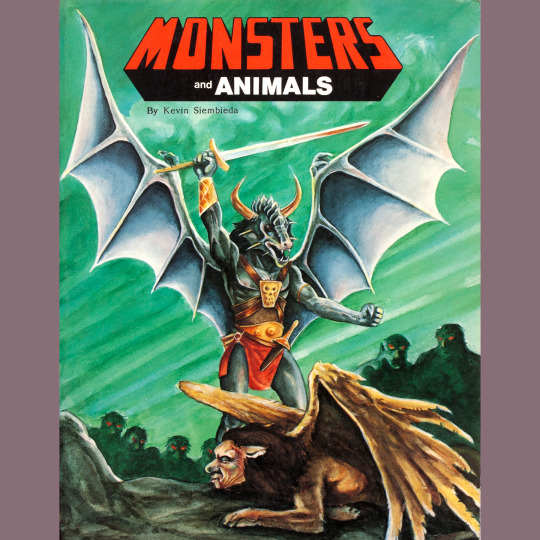
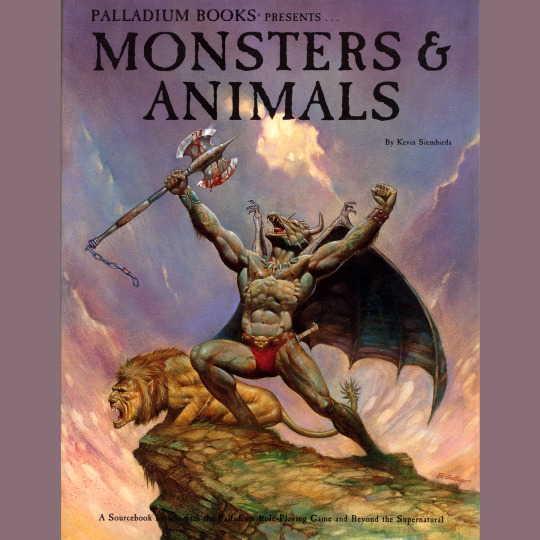
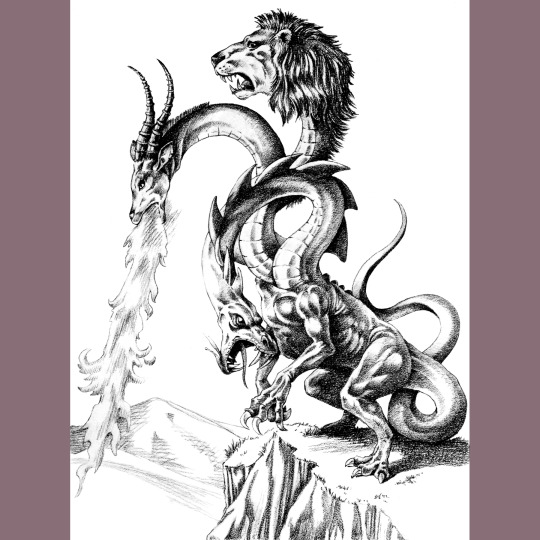

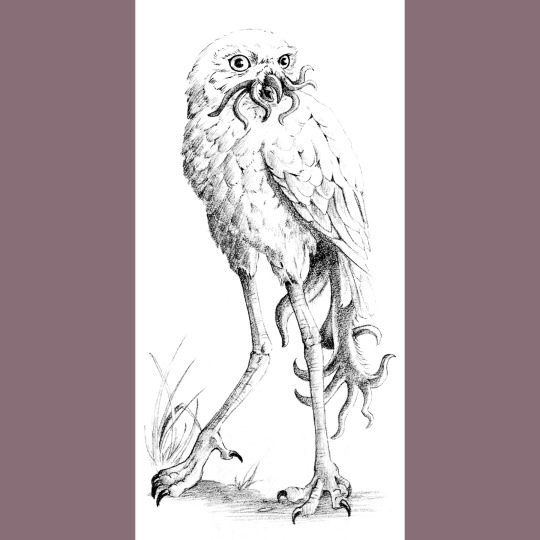
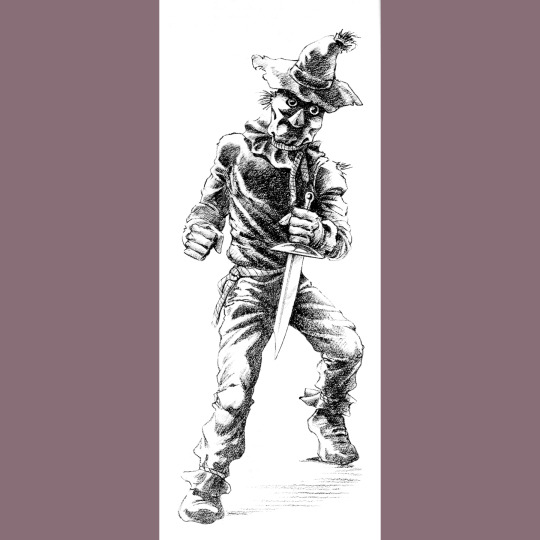
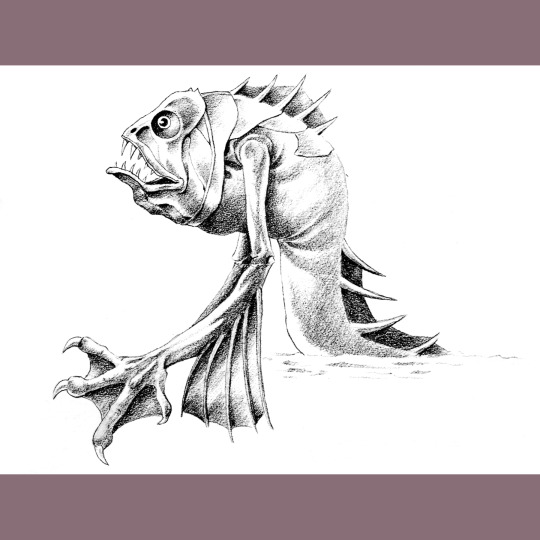

Monsters and Animals (1985) is the bestiary for the Palladium Role-Playing Game, consisting of about 100 pages for the former, 60 for the latter.
Let’s talk about the animals first. It is a weirdly exhaustive list. I am not sure I need stats for the goldfinch, despite it being the state bird New Jersey, but they’re in there. And lots of other birds, and other animals too, nearly none of which seem like good opponents for players. But I guess it is nice to know there is a small region in the southern portion of the continent where koalas live. Love a koala.
That’s another idiosyncratic thing for this book. Nearly all the creatures are accompanied by a small map of the continent with their range shaded in. I certainly don’t mind this sort of information, but I do kind of wonder if anyone was ever so in sync with a setting as to worry about whether monsters were in their proper geographic region. I can’t imagine playing a game where that would be a factor.
The monsters are a good mix of classics from folklore (a proper manticore!) and weird creations (Horse people with peacock tails? Sure, why not.) I think the Owl Thing is maybe my favorite. I have to say, the pencil work here is pretty outstanding and all by Kevin Siembieda. I’m not used to him delivering in this style, and at this level of realism. Not so into his cover for the first edition, though. The revised second printing cover is a strong improvement, and I love that manticore (the critter on the first printing isn’t a mistakenly winged manticore — rather, it matches Siembieda’s basic design for the sphinx).
#roleplaying game#dungeons & dragons#tabletop rpg#rpg#d&d#ttrpg#Palladium#Monsters And Animals#noimport
104 notes
·
View notes
Note

tumblr adds get more intriguing every day
I mean that is just an ad for After the Bomb, Palladium Games' post-apocalyptic RPG based on their officially licensed TMNT RPG, Teenage Mutant Ninja Turtles and Other Strangeness (which is getting a new edition because they were able to renegotiate the license with the license holder!). So like, it's actually normal.
Anyway based on everything I've heard Palladium kinda sucks so I recommend Mutants in the Now:
30 notes
·
View notes
Text
To build all of the solar panels, wind turbines, electric vehicle batteries, and other technologies necessary to fight climate change, we’re going to need a lot more metals. Mining those metals from the Earth creates damage and pollution that threaten ecosystems and communities. But there’s another potential source of the copper, nickel, aluminum, and rare-earth minerals needed to stabilize the climate: the mountain of electronic waste humanity discards each year.
Exactly how much of each clean energy metal is there in the laptops, printers, and smart fridges the world discards? Until recently, no one really knew. Data on more obscure metals like neodymium and palladium, which play small but critical roles in established and emerging green energy technologies, has been especially hard to come by.
Now, the United Nations has taken a first step toward filling in these data gaps with the latest installment of its periodic report on e-waste around the world. Released last month, the new Global E-Waste Monitor shows the staggering scale of the e-waste crisis, which reached a new record in 2022 when the world threw out 62 million metric tons of electronics. And for the first time, the report includes a detailed breakdown of the metals present in our electronic garbage, and how often they are being recycled.
“There is very little reporting on the recovery of metals [from e-waste] globally,” lead report author Kees Baldé told Grist. “We felt it was our duty to get more facts on the table.”
#solarpunk#solar punk#reculture#e-waste#renewable energy#solar power#solar panels#critical metals#rare earths#urban mining#metals recovery#consumer electronics#environment#sustainability#circular
33 notes
·
View notes